Kalama Community Wildlife Conservancy
Kalama Community Wildlife Conservancy is a vast, community-owned conservation area spanning over 49,000 hectares in northern Kenya’s Samburu County. Nestled between the Samburu National Reserve and the Marsabit ecosystem, Kalama offers breathtaking vistas of Mount Ololokwe and the Mathew Mountain Range, creating one of Kenya’s most dramatic wilderness backdrops.
The conservancy serves as a vital wildlife corridor linking Samburu and Marsabit, allowing elephants and other species to migrate safely across the region.
Home to the Samburu Special Five — the Reticulated giraffe, Beisa oryx, Grevy’s zebra, Somali ostrich, and Gerenuk — Kalama also supports lions, leopards, elephants, cheetahs, wild dogs, hyenas, kudu, and over 200 species of birds.
With only two safari properties operating within its borders, the conservancy ensures exclusive, crowd-free safari experiences. Visitors can enjoy guided game drives, night safaris, birdwatching, and immersive cultural visits with the Samburu community, known as the “Butterfly People” for their colorful attire and traditions.
Kalama is more than a wildlife refuge; it is a living example of community-driven conservation. Established to balance environmental protection with local livelihood needs, the conservancy provides income through eco-tourism while sustaining traditional pastoralism.
Local Samburu households benefit directly through tourism revenue, employment, education, and healthcare projects, all funded through conservancy earnings.
How to Get There
By Road:
✓ Distance: Approximately 350 km from Nairobi
✓ Travel Time: 5–6 hours via the well-maintained Nanyuki–Isiolo–Archer’s Post (A2) Highway
✓ Route: From Nairobi, drive north through Nanyuki and Isiolo. Turn off at Archer’s Post town, about 8 km south of the conservancy headquarters
✓ Scenery: The journey offers scenic views of Mt. Kenya, Laikipia plains, Samburu villages, and increasing wildlife sightings as you approach the conservancy
By Air:
✓ Charter flights and helicopter landings can also be arranged for private groups
✓ Kalama Airstrip is located near the conservancy headquarters and serves guests visiting Saruni Samburu Lodge and nearby properties
✓ Daily scheduled flights from Wilson Airport (Nairobi) to Buffalo Springs, Kalama, or Oryx Airstrips (flight time approx. 1 hour)
History
Kalama Conservancy was officially established in 1998 under the Gir Gir Group Ranch and later registered as a Community-Based Organization (CBO) in 2002. It became Kalama Community Conservancy Ltd. in 2013, solidifying its legal and financial structure as a community-owned enterprise.
The conservancy covers 16,000 hectares of core land within the greater Gir Gir Group Ranch, of which 6,000 hectares are fully protected for wildlife and free from livestock grazing.
Supported by organizations such as the Northern Rangelands Trust (NRT), The Nature Conservancy (TNC), and St. Louis Zoo, Kalama has implemented comprehensive conservation and community programs.
These include wildlife ranger patrols, anti-poaching initiatives, community health services, and education bursaries. Over 34 rangers and more than 50 staff are employed, the majority of whom are from local Samburu communities.
Tourism infrastructure has steadily grown, including the Saruni Samburu Lodge, Nasha Campsite, Kalama Airstrip, and Women’s Curio Market. Upgrading of roads and the Kalama Resource Center project further demonstrate the conservancy’s vision of sustainable growth.
Activities that can be done in Kalama Community Wildlife Conservancy
Wildlife Viewing Experiences
✓ Morning & Afternoon Game Drives: Set out on guided 2–3 hour safaris across Kalama’s rugged escarpments, red-sand plains, dry riverbeds, and acacia-dotted hills. The conservancy’s unique position as a wildlife corridor between Samburu and Marsabit means every drive brings new surprises from herds of elephants and reticulated giraffes to the graceful gerenuk standing tall on its hind legs.
You may encounter Grevy’s zebra, Beisa oryx, Somali ostrich, greater kudu, eland, impala, and an impressive array of predators, including lions, leopards, cheetahs, spotted and striped hyenas, and the elusive African wild dog.
The drives are accompanied by professional guides who share deep insights into the animals’ behavior, Samburu tracking techniques, and the delicate ecosystem that supports them.
✓ Sunset Safaris: Late afternoon drives reveal Kalama at its most dramatic. As the sun dips behind the Mathews Range, the landscape glows in shades of amber and crimson. Elephants and giraffes are often silhouetted against the setting sun while dust trails shimmer behind grazing herds.
Guests may pause at scenic ridges overlooking the vast Samburu plains for sundowner drinks, surrounded by the sounds of evening birds and distant calls of hyenas echoing through the valleys.
✓ Night Game Drives: When darkness falls, Kalama comes alive with nocturnal activity. Experience the conservancy after sunset under a blanket of stars, guided by powerful spotlights and keen-eyed rangers.
Watch as genets dart through the grass, porcupines waddle by, and bushbabies leap between trees. You may also glimpse elusive species such as aardvarks, civets, bat-eared foxes, and even leopards on the hunt. The night’s silence, broken only by the calls of owls and lions, offers an unforgettable glimpse into Africa’s hidden nightlife.
Nature-Based Guided Walks
✓ Walking Safaris: Join experienced Samburu rangers and naturalist guides for an intimate journey on foot through Kalama’s wild terrain. Learn how to identify animal tracks, spot signs of elephant movement, and recognize plants used for traditional medicine.
These walks immerse visitors in the fine details of the bush, from colorful butterflies and reptiles to the delicate balance between wildlife and pastoral life. Each step connects you to the land in a way vehicles never can.
✓ Birdwatching: Kalama is a haven for bird enthusiasts, boasting over 200 species ranging from colorful sunbirds and hornbills to powerful raptors such as martial eagles and bateleurs.
The escarpments and seasonal rivers attract both resident and migratory species, while the semi-arid landscape hosts endemics like the vulturine guinea fowl, Somali bee-eater, and rosy-patched bushshrike. Whether at dawn or dusk, birdwatching in Kalama offers constant discoveries and melodic rewards.
Immersive Conservation & Community Experiences
✓ Eco-Project Insights: Discover how Kalama embodies the principles of community-driven conservation. Guests can visit ranger posts to learn about anti-poaching patrols, wildlife monitoring, and the use of GPS tracking and drones to safeguard key species.
Learn about rangeland restoration, livestock zoning, and how sustainable grazing practices are integrated with wildlife protection. These programs are part of the Northern Rangelands Trust (NRT) model, which ensures that tourism directly benefits both nature and the Samburu people.
✓ Elephant Encounters: Kalama is part of the greater Samburu-Laikipia ecosystem — home to some of Kenya’s most famous elephant herds. Many of these elephants are long-term research subjects, recognized individually by name and family lineage.
Watching them navigate the rocky hills and dry riverbeds, often led by matriarchs decades old, is an awe-inspiring reminder of resilience and intelligence in the wild.
✓ Community Visits: Step into a traditional Samburu manyatta (homestead) to experience the culture, colors, and rhythms of daily life. Meet local families, learn about beadwork artistry, traditional songs, and how age-old customs coexist with modern conservation. These visits are respectful, authentic exchanges that deepen understanding of the human stories woven into Kalama’s landscape.
Unique Bush Experiences
✓ Sundowners & Bush Meals: Enjoy a picnic breakfast at sunrise beneath acacia trees, or a sundowner drink on a rocky outcrop overlooking endless wilderness. The view often includes elephants wandering below or giraffes browsing nearby, bathed in golden evening light. Meals in the bush are accompanied by warm hospitality and the natural orchestra of Samburu’s wild soundtrack.
✓ Photography Safaris: With its sculpted hills, red soils, and light that shifts from gold to crimson, Kalama is a paradise for photographers. Professional guides and some lodges offer specialist photographic support, perfect for capturing portraits of elephants, close-ups of birds, and panoramic shots of the expansive northern plains.
✓ Stargazing: Far from any city lights, Kalama’s night skies are dazzling. On clear nights, guides share the myths and stories of Samburu star lore while constellations stretch vividly from horizon to horizon. It’s one of the purest stargazing experiences in East Africa.
✓ Specialist Tracking: For adventurous guests, Kalama’s expert trackers offer focused tracking experiences. Follow elephant trails or look for signs of big cats in fresh footprints, broken twigs, and scent markers. These sessions reveal the intricate language of the wild and the patience required to understand it.
Wildlife that can be viewed in Kalama Community Wildlife Conservancy
Wildlife & Biodiversity
Kalama Community Wildlife Conservancy is a critical conservation area within the greater Samburu-Laikipia ecosystem, forming a vital wildlife corridor between Samburu National Reserve, Buffalo Springs National Reserve, and the Mathews Range Forest. Covering approximately 95,000 hectares (about 235,000 acres) of semi-arid wilderness, Kalama connects protected areas across northern Kenya and allows wildlife to move freely between community lands and national reserves.
The conservancy’s diverse landscapes — rugged hills, acacia woodlands, open savannah, rocky escarpments, and seasonal riverbeds — provide habitats for a remarkable array of species uniquely adapted to this northern dryland ecosystem. These habitats are also interwoven with Samburu pastoralist settlements, demonstrating a delicate coexistence between people, livestock, and wildlife.
Kalama lies within the Northern Rangelands Trust (NRT) network and plays a crucial role in elephant migration, predator dispersal, and sustainable community livelihoods. Its elevation and rocky terrain provide refuge for both large mammals and smaller endemic species rarely seen elsewhere in Kenya.
Wildlife at Kalama Conservancy
Large Mammals
✓ Buffalo – Typically found in the lower woodland and seasonal watercourses, especially after rains
✓ Gerenuks – The long-necked “giraffe gazelles” unique to Samburu, often spotted standing upright to feed on shrubs
✓ Grant’s Gazelles, Impalas, and Elands – Common grazers and browsers that sustain predators throughout the year
✓ Beisa Oryx – A striking antelope adapted to arid environments, often seen in small herds grazing among rocky outcrops
✓ Grevy’s Zebras – One of Africa’s most endangered zebra species, Grevy’s zebras thrive in Kalama’s open plains and water catchments
✓ Reticulated Giraffes – Iconic to northern Kenya, these beautifully patterned giraffes are commonly seen browsing on acacia trees across the conservancy
✓ African Elephants – Kalama is a key corridor for Samburu’s elephant herds, including individuals known and studied by the Save the Elephants research project. These herds move between Kalama, Namunyak, and Samburu Reserves
Big Cats & Predators
✓ Black-backed Jackals – Commonly seen scavenging near camps or following lions after a kill
✓ Cheetahs – Occasionally seen on the open plains, where they chase down gazelles with incredible speed
✓ Lions – Resident prides roam the conservancy and neighboring reserves, often following herds of zebras and oryx.
✓ African Wild Dogs – Rare but increasingly recorded during the dry season as packs traverse Kalama in search of prey
✓ Leopards – Frequently sighted along the rocky escarpments and dry riverbeds, using the terrain’s cover to ambush prey
✓ Spotted & Striped Hyenas – Both species inhabit Kalama; spotted hyenas dominate the plains, while striped hyenas are more elusive, active at night
Other Mammals
✓ Warthogs – Found grazing in open patches near acacia thickets
✓ Bat-eared Foxes – Seen at dusk or dawn, particularly in sandy plains
✓ Civets & Genets – Spotted during night drives, often near rocky outcrops
✓ Baboons & Vervet Monkeys – Often encountered near water points and rocky ridges
✓ Dik-diks – Tiny antelope that dart among the shrubs, commonly seen during drives and walks
✓ Aardvarks, Bushbabies, and Hares – Elusive nocturnal species adding charm to nighttime safaris
Birdlife
✓ Migratory Visitors – European rollers, storks, and shrikes add seasonal variety to the avifauna
✓ Water & Seasonal Birds – When rains fill the luggas (dry riverbeds), herons, plovers, and sandgrouse gather
✓ Dryland Specialists – Somali bee-eater, vulturine guinea fowl, rosy-patched bushshrike, and lilac-breasted roller
✓ Raptors – Including martial eagles, tawny eagles, bateleurs, augur buzzards, and vultures soaring above the escarpments
✓ Total Recorded Species – Over 300 bird species have been documented, making Kalama a rewarding destination for birdwatchers
Kalama Community Wildlife Conservancy Activities & Community Pictures
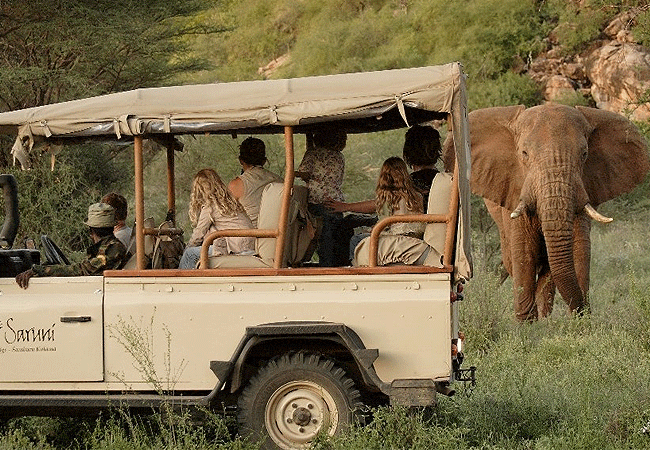
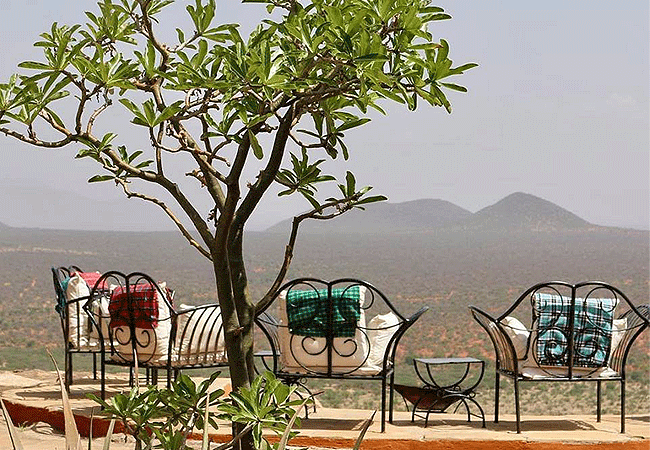
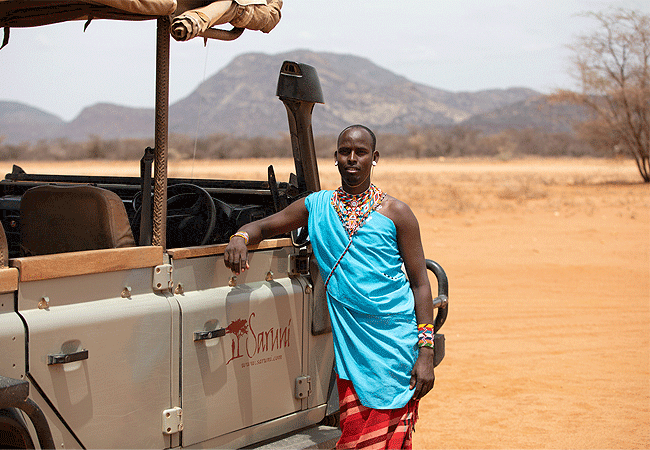
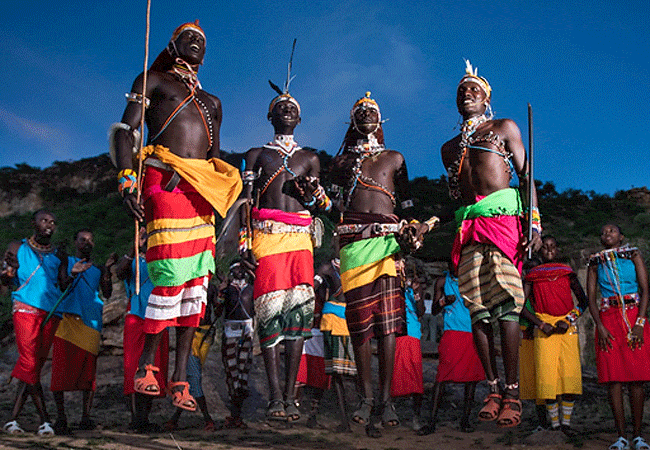
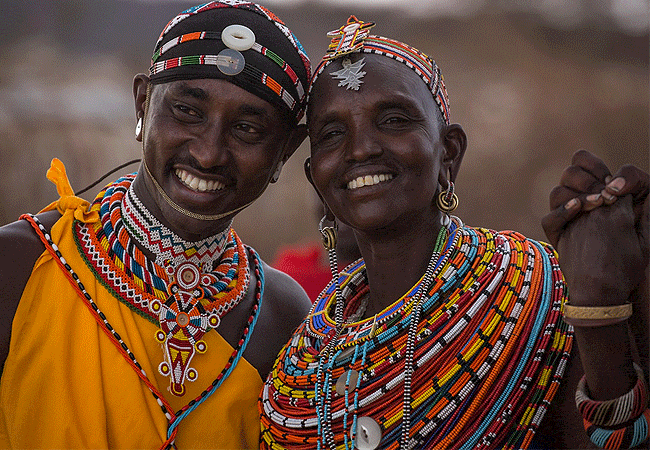
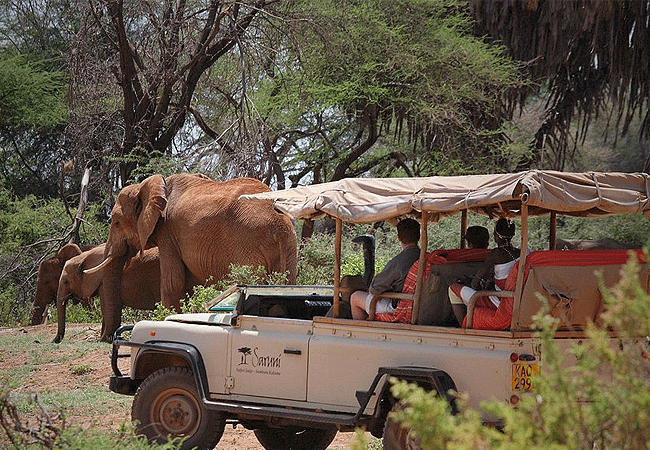
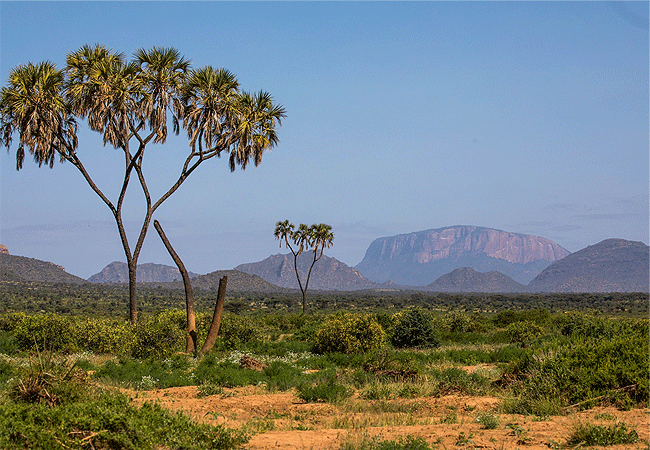
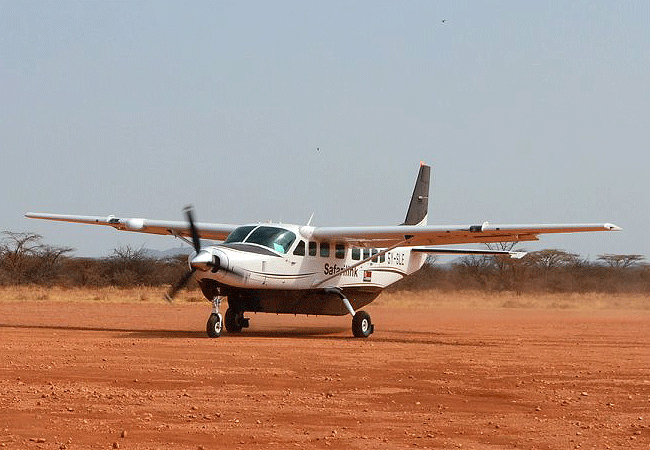
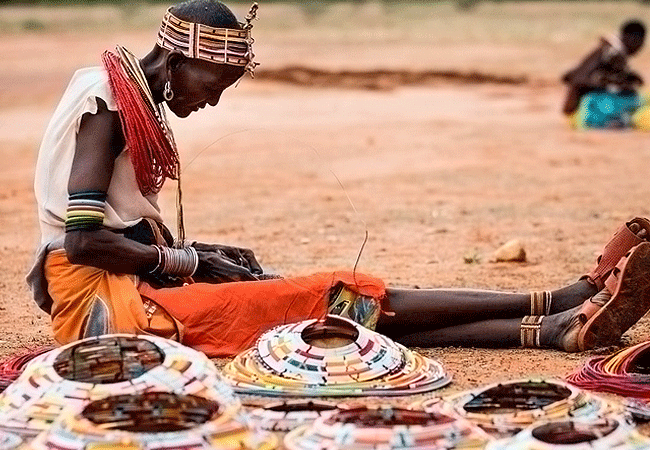
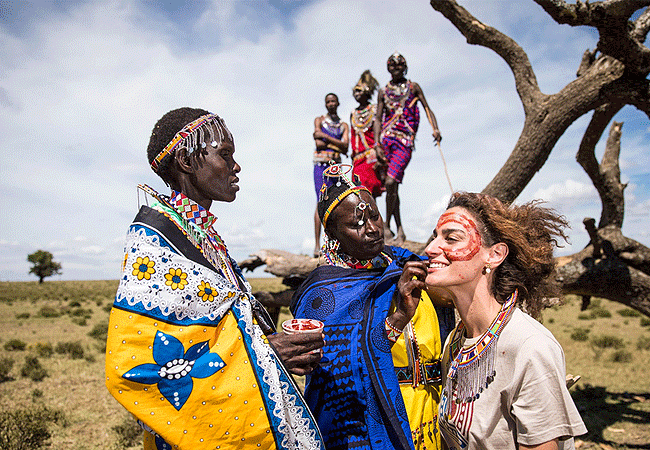
Kalama Community Wildlife Conservancy Pictures
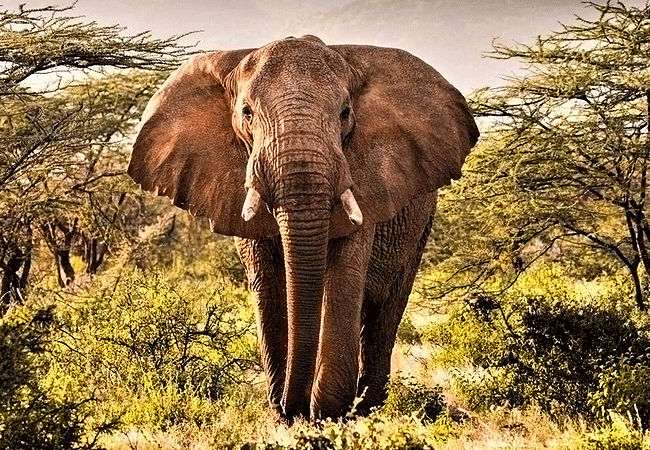
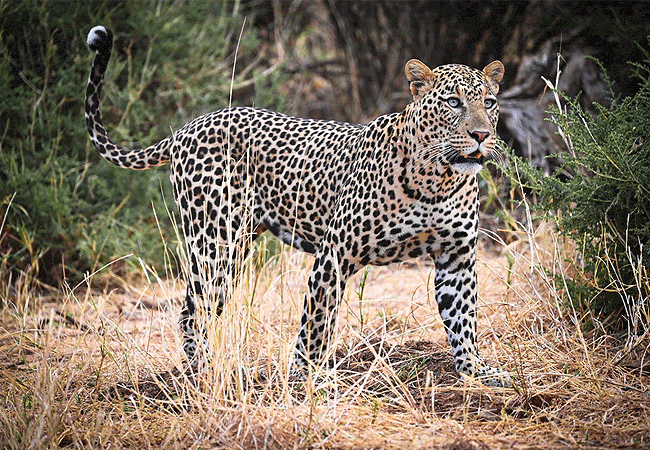
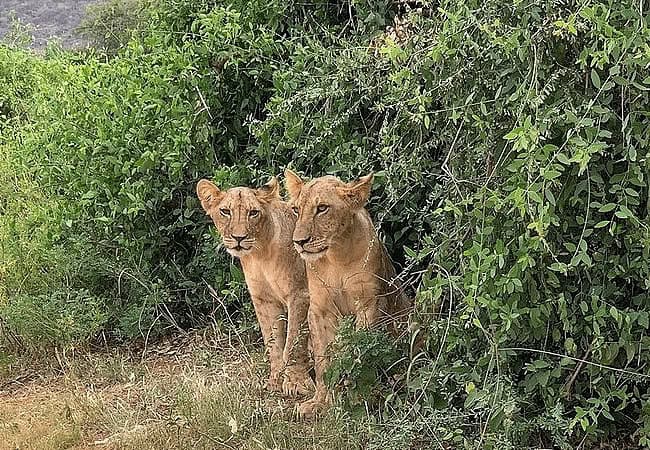
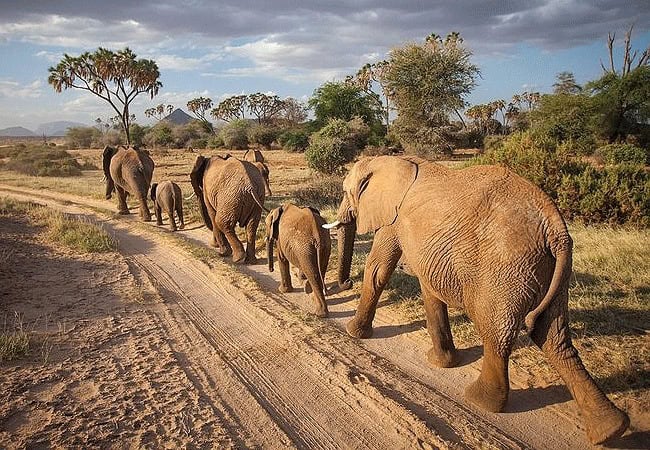
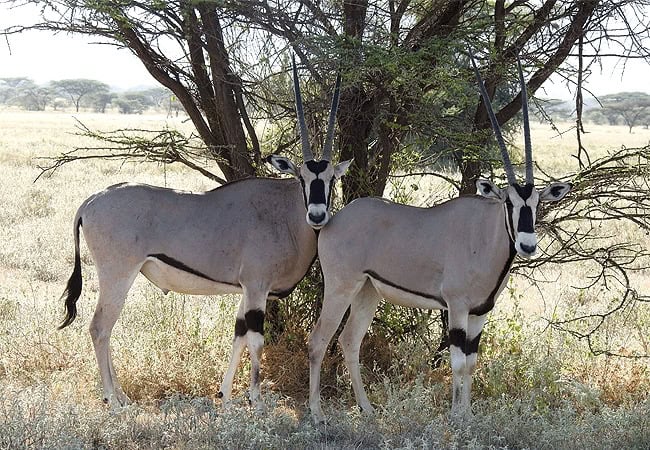

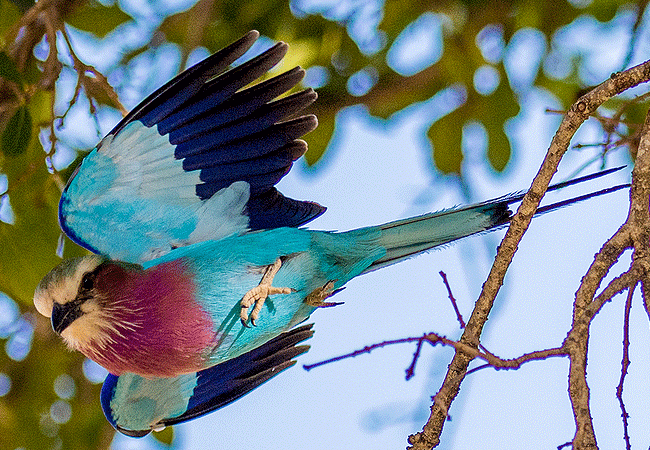
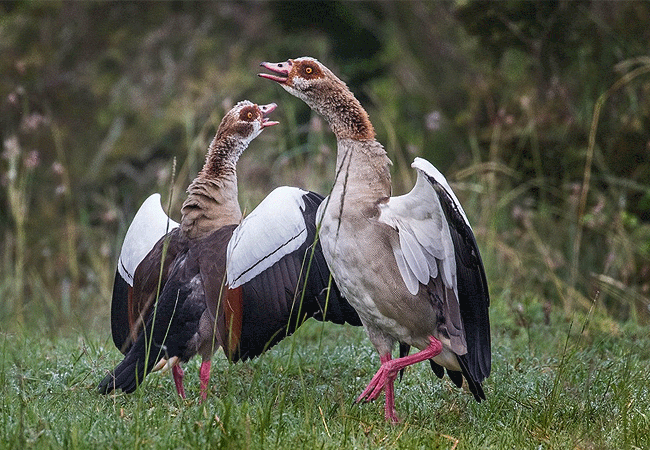
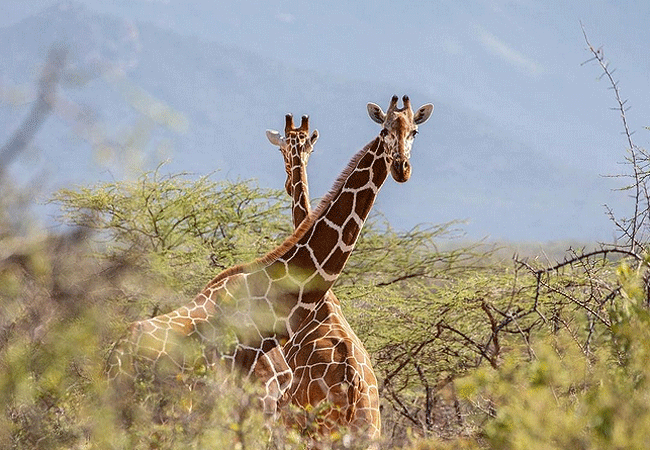
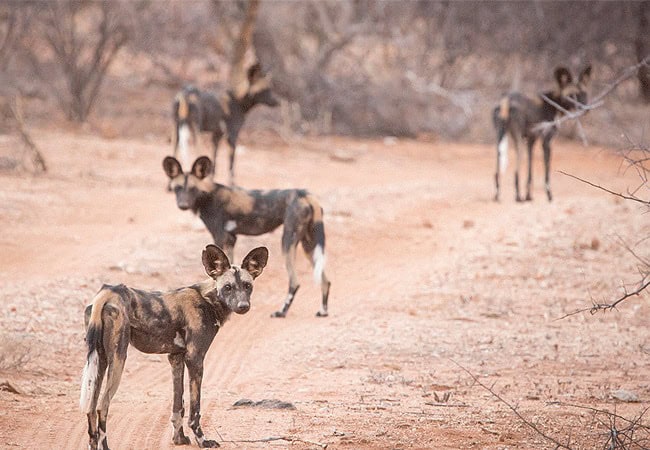
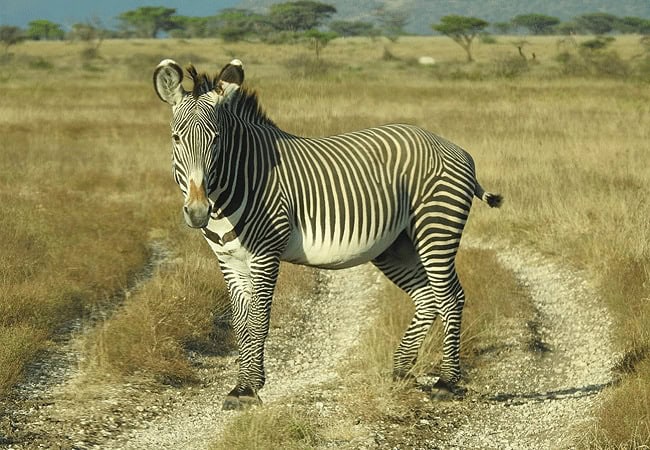
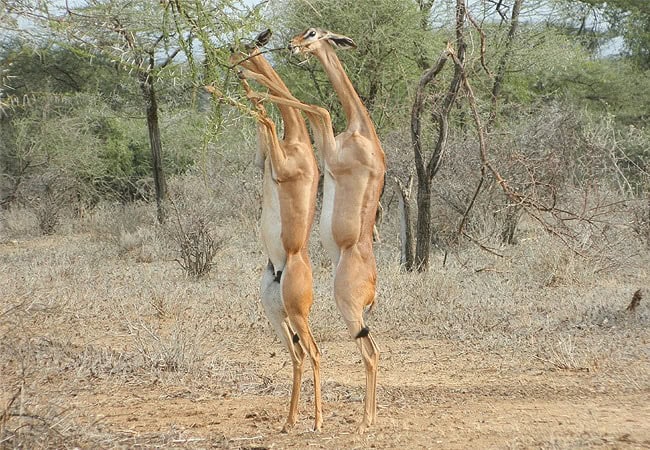
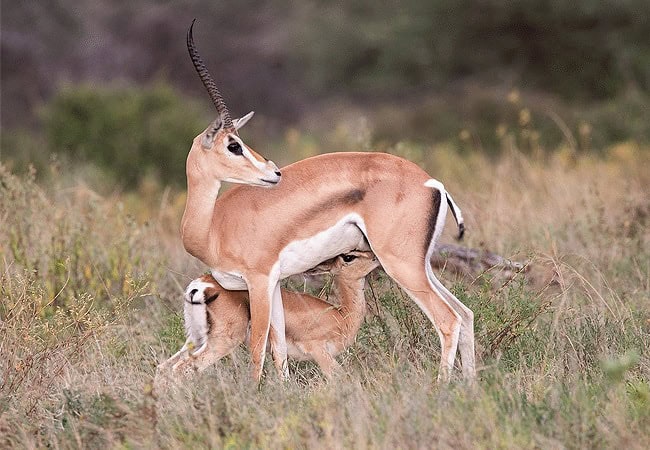
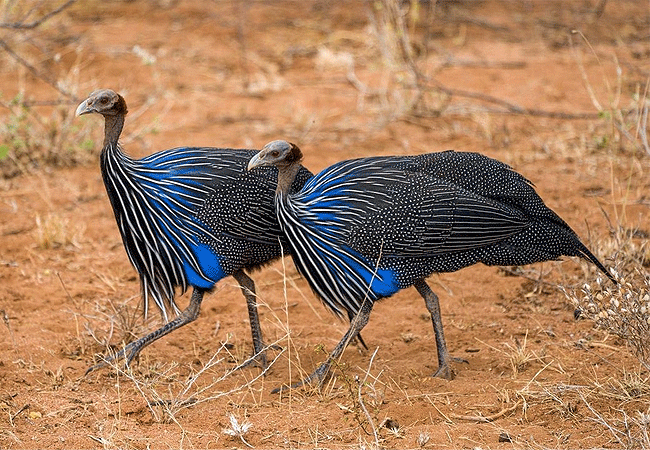
Accommodation options in Kalama Community Wildlife Conservancy
Kalama Community Wildlife Conservancy features two outstanding lodges that combine luxury, sustainability, and authentic cultural immersion. Each property offers a distinctive safari experience framed by the dramatic landscapes of northern Kenya and the sacred Mount Ololokwe.
Saruni Samburu Lodge
Saruni Samburu Lodge sits high on a rocky escarpment within the Kalama Conservancy, overlooking the endless Samburu plains and Mount Kenya in the distance. It is the first and only lodge in the conservancy, designed with open architecture that connects guests directly to the wilderness.
The lodge offers six luxurious villas, each with breathtaking panoramic views, elegant interiors, and private terraces. The design blends stone, wood, and canvas to create an atmosphere of comfort and harmony with nature.
Villa Options:
✓ Family Villa 1
✓ Single Villa 3
✓ Family Villa 4
✓ Family and Single Villa 6
✓ Family and Single Villa 2
✓ Single Villa 5 Honeymoon Suite
Guests can relax in two infinity pools or enjoy a range of wellness treatments at the Wellbeing Space. Dining includes gourmet bush breakfasts, starlit terrace dinners, and open-air meals surrounded by stunning views.
Activities include day and night game drives, guided bush walks, birdwatching, village visits, helicopter excursions, and the popular Warrior Academy, where visitors learn survival and tracking skills from Samburu warriors.
Saruni Samburu offers exceptional game viewing opportunities, including encounters with elephants, lions, leopards, and the rare Samburu Special Five — Reticulated Giraffe, Grevy’s Zebra, Somali Ostrich, Beisa Oryx, and Gerenuk.
Basecamp Samburu
Basecamp Samburu is an intimate eco-luxury tented camp nestled within the Kalama Conservancy, offering a serene retreat with uninterrupted views of Mount Ololokwe. Built with a strong commitment to sustainability, the camp operates entirely on solar power and minimizes environmental impact through locally sourced materials and zero-plastic operations.
Accommodation includes five spacious tents — four doubles and one family tent — as well as two elevated Star Beds for guests seeking a more private and romantic setting. Each unit features ensuite bathrooms, outdoor verandas, and spectacular views of the surrounding wilderness.
The Deluxe Star Bed includes a private jacuzzi beneath the stars, while the Standard Star Bed offers a secluded dining area perfect for special occasions.
Guests can enjoy freshly prepared meals in the open dining area overlooking the plains or gather around the fire pit for evening storytelling.
Activities include guided nature walks with Samburu warriors, day and night game drives, birdwatching, cultural village visits, sundowners, bush meals, Scorpion Safaris, and excursions to the Reteti Elephant Sanctuary.
Booking & Reservations Kalama Community Wildlife Conservancy Contact
Mobile: + 254-721-242-711
WhatsApp: +254-721-242-711
Reservations: +254 718-179-967
Email: [email protected]
Website: https://africanspicesafaris.com
